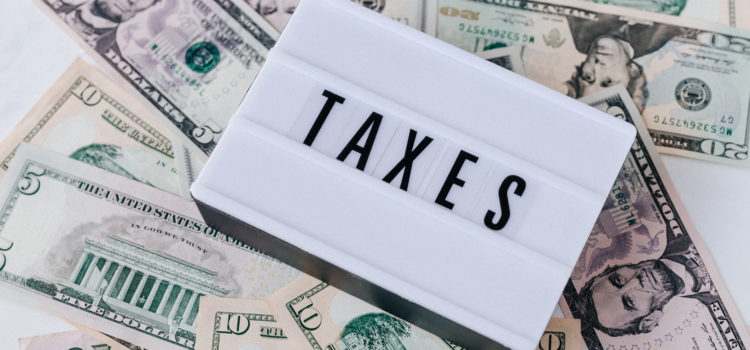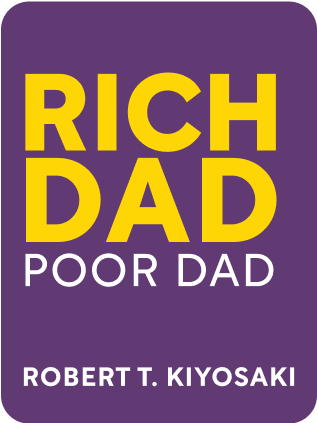

This article is an excerpt from the Shortform summary of "Rich Dad Poor Dad" by Robert T. Kiyosaki. Shortform has the world's best summaries of books you should be reading.
Like this article? Sign up for a free trial here .
Do you want to know how to decrease taxable income? How can it help you?
Learning how to decrease taxable income is one subject Robert Kiyosaki covers in Rich Dad, Poor Dad. While it’s possible that there is some value to learning how to decrease taxable income, it shouldn’t be your go-to for making money. You can read Kiyosaki’s advice on how to decrease taxable income below.
Reduce Taxes Through Corporations
(Shortform caveat: we consider this the worst chapter in the book. He doesn’t explain the advice clearly enough to be useful. The advice doesn’t apply to most people’s situations. And taken incorrectly, it could get you into trouble.
Treat none of this as actual tax advice; seek a tax attorney for real advice, and executing some of this too liberally is illegal.)
Why Taxation is Bad
In Rich Dad, Poor Dad, Robert Kiyosaki is clearly strongly against taxation, and says that people should learn how to decrease taxable income, saying things like:
- Most people work from January to May just for the government.
- The Social Security tax is an insidiously large tax, at 15% of wages.
- Originally in England/early US, taxes were only levied against the rich. They were then extended to middle and lower classes to support a growing government appetite for money, and eventually taxation disproportionately punishes the poor.
- The biggest bully isn’t your employer or your manager, but the tax man. “The tax man will always take more if you let him.”
Whatever your philosophical bent on taxation, the practical point is that the rich find ways to minimize their tax burden, sometimes paying a lower % of their income than lower tax brackets. According to Kiyosaki, this is the benefit of knowing how to decrease taxable income.
Forming a Corporation
Robert Kiyosaki’s solution? Form your own corporation. Here are its benefits on how to decrease taxes.
Deductions for Expenses
You can pay legitimate business expenses from pre-tax money, rather than post-tax money. This is one way of figuring out how to decrease taxes.
Say you have a business that buys and sells real estate. To travel to see new properties, you can pay for a car. You have business dinners that you can partially expense. You can have board meetings in exotic locations you would have vacationed anyway.
Shortform Explanation
Here’s the financial difference on how to decrease taxes.
* Say you earn $100 from salary, and after 40% taxes it’s $60 in your pocket. Your car costs $60, so you end up with $0.
* Say your corporation makes $100 in income. Your car is used for business, so the corporation pays $60 for the car. The corporation then has income of $40. After a 40% tax, this ends up being $24. This profit can then be distributed to shareholders as a dividend.
* (In reality, this would be taxed at a 20% corporate rate and 20% personal capital gains rate, but I use 40% to better compare with the pre-tax situation above)
* Here’s another way to phrase it: In the company, the $60, if it wasn’t spent on the car, would have been taxed as income. After the 40% tax, this is equivalent to $36. So it basically cost you $36 post-tax to get the car service, rather than $60 pre-tax, leading to a $24/$60 = 40% discount.
Again, be very careful with this way of how to decrease your taxable income. This isn’t a limitless buffet that you can transfer all personal expenses to. Make sure you understand what counts as a legitimate business expense and what creeps across the line to personal expenses.
Lower Tax Rates (allegedly)
From the book: “the income-tax rate of the corporation is less than the individual income-tax rates.”
Shortform Explanation
Superficially, this is true: in 2017 and before, corporate income tax used to be a flat 35%, while personal income tax was 39.6% at the highest bracket. In 2018, this became 21% and 37% respectively.
What he ignores, though, is that the corporate income is paid out to shareholders through dividends, which incurs an additional 20% personal capital gains tax.
Therefore the actual tax rate on dividends is now 1 – 0.79 * 0.8 = 36.8%, only slightly better than 37%. So, consider this when using this method on how to decrease your taxable income.
Protection from Lawsuits
Corporations and trusts can protect assets from creditors. A rich person as an individual may control things but own nothing. A corporation can be one way to decrease your taxable income.
(Shortform caveat: though in certain cases (like fraud or the corporation being essentially the same as the person), a litigant can “pierce the corporate veil” and hold you individually responsible.)
Delaying Taxes on Real Estate Sales
Take advantage of Section 1031, which allows delaying taxes on real estate that is exchanged for a more expensive piece (in a delayed exchange, you have 45 days to find a replacement property and 180 days to complete the sale).
Knowing how to decrease taxable income is one strategy discussed in Rich Dad, Poor Dad. As mentioned above, you should consult with legal counsel or tax experts before taking any steps on how to decrease taxable income.

———End of Preview———
Like what you just read? Read the rest of the world's best summary of Robert T. Kiyosaki's "Rich Dad Poor Dad" at Shortform .
Here's what you'll find in our full Rich Dad Poor Dad summary :
- The key differences in how rich dad and poor dad approached life
- Why it's a terrible idea to buy an expensive house
- How to overcome your own mental blocks to become wealthy for life






